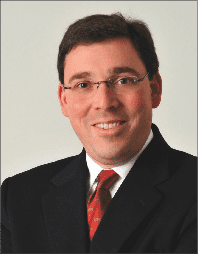
In this economy, the only category in which aesthetic practices are showing steady growth rates is in nonsurgical procedures.
According to recent articles in The Wall Street Journal and The New York Times, facelifts and liposuction procedures are in a serious decline as people are spending more cautiously and putting large purchases on hold. Consumers eager to stay looking young are turning to injectables instead of surgery.
“The scope of aesthetic surgery lies in integrating surgical and nonsurgical procedures,” says Alan Matarasso, MD, FACS, an aesthetic plastic surgeon in private practice in New York City. “With the expanding menu of fillers now available, we are able to treat the whole face with impressive results.”
OFF-LABEL USES
Some of the expanding facial targets for dermal fillers include the cheekbones, temporal region, traumatic scars, eyebrows, jawline, and—of course—the lips. Many injectors are starting to distinguish between fillers that basically fill up a crease and fillers that can be injected in multiple tissue planes to achieve the desired effect.
“Off-label uses of fillers for rhinoplasty and post-rhinoplasty defects are very popular, and the results can be dramatic in some patients,” says Steve Cohen, MD, a San Diego-based plastic surgeon. “I like to use a temporary filler, like Restylane or Radiesse, followed by a permanent filler like ArteFill, which is presently tough to find because the company is bankrupt—but may be resuscitated in the future.”
Hyaluronic fillers can solve a number of contour problems in the nose, as well as be used for both primary noses and secondary rhinoplasty deformities that were formerly treatable only with surgery. Val Lambros, MD, FACS, of Newport Beach, Calif, has, for one, performed these injections for years and is enthusiastic about the results. The products, primarily Restylane, are very long lasting&38212;up to 4 years so far—and can be dissolved if need be, Lambros says.
“Off-label uses of fillers for chin and cheek, mandibular angle augmentation, or more extensive facial contouring can lead to superb results in properly selected patients,” Cohen adds.
Volumetric lifting and contouring of facial features may be achieved through deep injection planes, according to Neil Sadick, MD, director of Sadick Dermatology in New York City. “Radiesse is an excellent choice when you need a deep filler for volumizing and contouring applications, due to its stimulatory properties. Structural collagen support and stimulation to rebuild the skin’s foundation and create scaffolds in the face are best achieved through injection into the deep dermis or immediate subdermal plane.
“Evolence is another good option for achieving structural support and local volume augmentation. Its unique glycomatrix technology allows for excellent natural, structural facial contouring and support,” he says. “By utilizing these two unique filling agents, results may be expected to last up to 12 months, giving an additional clinical advantage over hyaluronic acid derivatives, which may also be used in this clinical setting.”
Combination techniques that use multiple products in one injection session have become standard procedure in most aesthetic practices.
“We can accomplish a complete lifting by stimulating fibroblasts and encouraging collagen growth all with injectables,” says Adam Bodian, MD, a dermatologist in private practice in Great Neck, NY. “I have been able to achieve the kind of results that were formerly only possible with surgery without any more than topical local anesthesia. Sculptra combined with Botox has an incredible impact on facial rejuvenation. Botox serves to soften muscle activity and lines of expression, while the Sculptra actually stimulates your fibroblasts to grow new collagen. It is a great one-two punch for a nonsurgical lift.”
Historically, the lips are considered one of the most aesthetically challenging areas to treat. Aesthetic lip enhancement has evolved to encompass far more complexity than just filling a deflated top lip. The entire lip anatomy, including the philtrum, vermillion, and mucosa, may be addressed via a careful and judicious application of filling substances.
Molding is a useful technique to help improve the outcomes of lip augmentation. When treating the lips, many injectors use their fingertips placed in and around the patient’s mouth to assess the evenness of the injected filler and apply gentle pressure to distribute the product.
By far, the most popular fillers for lips worldwide are hyaluronic acid-based products, including Restylane, Juvéderm, Perlane, and countless other brands marketed in Canada and Europe. Evolence Breeze, currently undergoing clinical trials for FDA approval, has been cited by many practitioners as an ideal lip filler due to its duration and minimized side effects.
In contrast to the hyaluronic acid-based fillers, which may produce significant swelling of the lips immediately following treatment, minimal swelling has been noted after injecting Evolence Breeze into the lips—which is preferred by many patients who desire to avoid any downtime.
OFF-FACE APPLICATIONS FOR DERMAL FILLERS
Not all fillers are used for the same areas or aesthetic indications, and not all injectors perform treatments in the same way.
“Hand rejuvenation with fillers may add volume and improve laxity, wrinkling, and protuberant hand veins,” Sadick says. “Hyaluronic acid derivatives, such as Perlane, Juvéderm Ultra Plus, and new-generation collagen derivatives, may be used in this regard with results lasting up to 1 year. However, if the patient requests longer improvement, then newer calcium hydyroxylapatite—Radiesse—and poly (l-lactic) acid derivatives, such as Sculptra, can achieve longer-acting correction utilizing new, advanced bolus/lidocaine techniques.”
“We have had excellent success using a number of fillers off-label on and off the face,” Cohen notes. “Radiesse and Sculptra are both excellent for filling hands and reducing the appearance of veins and thin skin. We often combine this with Fraxel re:store laser to remove pigment. The laser is done first, and then the filler is injected under topical and local anesthesia.”
At a recent plastic surgery meeting in France, Lambros learned that in some Asian countries, particularly Taiwan, Restylane injections to the head of the penis are becoming very popular.
PATIENT COMFORT
Taking the extra time and effort to improve the patient’s experience with dermal fillers can go a long way toward patient satisfaction. If patients can be more comfortable during injections, they will be more likely to return for more in the long term.
Providing adequate anesthesia is important to improve patient satisfaction and eliminate reluctance to return for future filler injections. The infusion technique of premixing lidocaine with the filler has become commonplace in many practices for reducing pain when using products not formulated with an anesthetic. The technique involves infusing the filler with 0.15 cc of 2% lidocaine, using a female-to-female adapter for connecting the two syringes. In some cases, this may eliminate the need to do nerve blocks.
Even with a good block, some areas may not get adequate anesthesia, which renders the treatment somewhat uncomfortable, especially in sensitive areas such as the commissures and Cupid’s bow. Patients who have a satisfactory level of comfort are much more likely to return for touch-ups and additional treatments.
Bruising is the bane of all cosmetic procedures, and this possibility should be carefully discussed with all patients. “At the same time the injection is done, ice compresses can be applied for about 5 minutes before or after to contract blood vessels, says Elliot Jacobs, MD, FACS, a plastic surgeon in private practice in New York City. “To minimize the incidence of bruising, patients should be instructed to stop [using] vitamin E, aspirin, or NSAIDs for 1 to 2 weeks before treatments. Older patients may be on anticoagulant therapy; and although anticoagulants are not discontinued, these patients must be cautioned that they may experience more bruising from an injectable treatment. We also caution patients not to have a procedure before important social events or professional engagements.”
“Nothing we do is risk-free,” Matarasso says. “Every filler can lead to adverse events. Preinjection considerations should include the defect, depth, and distensibility; anatomic location; prior history; and goals of the patient. It is of vital importance to perform a detailed consultation with the patient to review the expectations, limitations, benefits, and full disclosure of any risks or contraindications.”
INNOVATIVE DIAGNOSTIC TOOLS
Cosmetic patients present with their own ideas of how they look and how they want to look, but they often find it challenging to relate their treatment goals to practitioners. This often results in a disconnect between what the patient wants and what the practitioner thinks the patient wants, and/or what the practitioner can achieve.
In order to establish a method for objective quantification of specific facial areas, a series of five-point photonumeric rating scales were developed by a panel of experts in conjunction with Merz Pharmaceuticals. The scales are a series of visual guides that have been developed to address regional areas of the face that are important in determining indications for dermal fillers. For example, lip fullness is rated from 0 or “very thin” to 4 or “full.” The Merz Aesthetic Scales (also known as the Facial Wrinkle Scale) proves to be helpful in practices when they are used as an integral part of the consultation process.
|
See also “From Wrinkle Fillers to Facial Shaping” by Wendy Lewis, in the January 2009 issue of PSP. |
 |
“Although there have been other scales in the past, such as the Fitzpatrick Skin Type Classification Scale and the Glogau Wrinkle Severity Scale, we have not had scales designed to address specific aesthetic regions of the face, including brow position and lip fullness, that are the most common treatment areas patients request,” according to Timothy Flynn, MD, a dermatologic surgeon in private practice in Cary, NC. “The Merz Aesthetic Scales offer a total aesthetic package that we can adapt for treating patients, as well as [for] clinical research. By using these validated five-point scales, and taking patients through the process, they can be educated in the new language of aging and will have a better idea of how their treatment will progress.”
Nuances exist for each product, including discomfort upon injection, ease of use, location of injection into the skin, and duration of results, as well as potential risks and the management of adverse events. The constantly evolving menu of injectables offers practical solutions for patients seeking noninvasive aesthetic improvements.
“There is nothing more gratifying for patients than to experience the immediate correction of facial wrinkles as a result of the injection of a dermal filler. The ‘wow’ factor is unsurpassed,” Bodian says.
PLACES TO GO
For physicians interested in advanced instruction in dermal filler techniques and live injection workshops, the list of meetings devoted to this technology includes AboutFace, the American Academy of Cosmetic Surgery (AACS), and Facial Cosmetic Surgery.
AboutFace 2009 will be held March 27 through 29, 2009, in Las Vegas. Distinguished faculty scheduled to appear at AboutFace 2009 include Steven Fagien, Gary Monheit, Nowell Solish, Julius Few, Rod Rohrich, Wm Philip Werschler, Cheryl Burgess, Steven Cohen, Val Lambros, and Jeffrey Kenkel. The Web site for AboutFace is [removed]www.edusymp.com/aboutface[/removed].
Facial Cosmetic Surgery 2009 will be held in June in Las Vegas (see www. multispecialtyfoundation.com for more information. The AACS meeting is scheduled for January 2010 in Orlando, Fla (www.cosmeticsurgery.org).
Wendy Lewis is a consultant and writer in the field of aesthetic medicine and author of 10 books, including Plastic Makes Perfect: The Complete Cosmetic Beauty Guide (Orion). She can be reached at .





